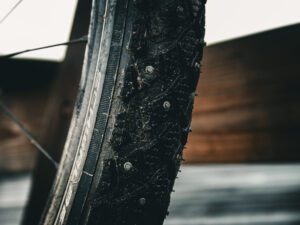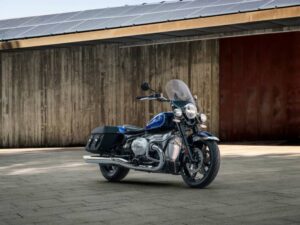2023 Hyundai Tucson

Overview
The 2023 Hyundai Tucson struts a cutting-edge style that stands out among its more sober- looking compact SUV competitors. That doesn’t mean that the Tucson sacrifices practicality or affordability. It boasts both. Hyundai has taken the blanket approach with the Tucson, offering a wide variety of trims and powertrains—including a hybrid and plug-in hybrid—giving it broad appeal. The entry-level powertrain is a 2.5-liter four-cylinder but the hybrid and plug-in hybrid models use a turbocharged 1.6-liter four that’s buttressed by an electric motor—a combination that provides more pep. Entry-level models of the Tucson are nicely equipped while higher-end trims cross the line from mainstream to premium, giving it an edge over rivals such as the Honda CR-V, the Toyota RAV4, and the Volkswagen Tiguan.
What’s New for 2023?
Following a complete redesign for the 2022 model year, the Tucson sees only a few packaging changes for 2023. The Premium package has been eliminated from the SEL model and its contents have been distributed as standard features to other trim levels. For example, the panoramic sunroof is now standard on the N-Line trim and the larger 10.3-inch infotainment screen can be found on all XRT trims and up. Adaptive cruise control, pedestrian detection, and a speed limit assist feature are now standard on all Tucson trims. Serenity White Pearl replaces Quartz White on the Tucson’s exterior color palette.
Pricing and Which One to Buy
SE
$27,745
SEL
$29,345
SEL Convenience
$31,595
Blue Hybrid
$32,195
XRT
$34,570
N-Line
$34,620
$35,155
Limited
$37,005
SEL PHEV
$38,345
Limited Hybrid
$39,955
Limited PHEV
$45,605
After sampling the Tucson’s various powertrains, we think the hybrid represents the sweet spot between performance, features, and price. We suggest the SEL Convenience Hybrid trim as it comes standard with heated front seats, blind-spot monitoring, adaptive cruise control, a sunroof, and a 10.3-inch digital gauge display, among other niceties.
Engine, Transmission, and Performance
A 187-hp 2.5-liter four-cylinder will be standard and comes with an eight-speed automatic and either front or all-wheel drive. A turbocharged 1.6-liter four will power hybrid and plug-in hybrid models, which is good for a combined 226-hp in the former and 261-hp in the latter; all-wheel drive is standard with the electrified powertrains and both come with a six-speed automatic transmission. The non-hybrid Tucson’s performance is adequate at best, so lead-footed drivers will yearn for more power. At our test track, our all-wheel-drive Limited test vehicle loped to 60 mph in an unimpressive 8.8 seconds, which is nonetheless close to average for this not-very-swift class of SUVs. The more powerful Tucson hybrid and plug-in hybrid are both quicker, but don’t expect the sportscar-like acceleration of Toyota’s RAV4 Prime from them. At our test track, our loaded Limited hybrid test vehicle managed a reasonable 7.1-second run to 60 mph. While the Tucson is no sports car, its handling is confident, its steering is reasonably crisp, and its ride is agreeable. What’s most striking about the Tucson’s driving demeanor is how quiet and refined it feels when cruising; it’s these traits that give the SUV a sense of luxury that is rare to find in this class.
Range, Charging, and Battery Life
The plug-in hybrid model sports a 13.8-kWh battery pack that is said to offer up to 33 miles of electric-only driving, according to the EPA. A 7.2-kW onboard charger allows the battery to be fully recharged in about two hours when connected to a level 2 charging station.
Fuel Economy and Real-World MPG
The EPA estimates that nonhybrid versions of the Tucson should deliver as high as 26 mpg city and 33 mpg highway with front-wheel drive. Fuel efficiency ratings for the hybrid are as high as 38 mpg city and 38 mpg highway; the plug-in hybrid model earned a rating of 80 MPGe combined and delivered 33 miles of electric-only driving in the EPA’s test. On our 75-mph highway fuel-economy route, the hybrid model failed to deliver its EPA estimated 38 mpg, delivering just 28 mpg; we haven’t tested the plug-in hybrid or the nonhybrid Tucson on our route yet. For more information about the Tucson’s fuel economy, visit the EPA’s website.
Interior, Comfort, and Cargo
The Tucson sports a simplistic but modern dashboard design with a digital gauge display, a push-button shifter, and a touch-sensitive control panel for the climate-control system and infotainment. Hyundai’s flagship Palisade SUV and the brand’s recently redesigned Sonata and Elantra sedans have served as a sort of watershed moment for the company’s interior designs, and the new Tucson continues the trend with a thoughtfully arranged interior filled with quality materials and luxury features. The Tucson’s rear seat space and cargo area are both larger than the outgoing model, providing more passenger comfort and practicality. Behind the hybrid’s back row, we fit nine carry-on suitcases, and the luggage capacity rose to 22 bags with the seatbacks stowed.
The Car and Driver Difference
Infotainment and Connectivity
A standard 8.8-inch touchscreen is integrated into the dashboard with Apple CarPlay and Android Auto; a larger 10.3-inch screen with built-in navigation is optional—as are features such as SiriusXM satellite radio and an upgraded Bose stereo system. Other high-tech offerings include Hyundai’s digital key smartphone app, which provides lock and unlock features as well as an option for remote start.
How to Buy and Maintain a Car
Safety and Driver-Assistance Features
A host of driver-assistance features will be available, many of which will come standard. For more information about the Tucson’s crash-test results, visit the National Highway Traffic Safety Administration (NHTSA) and Insurance Institute for Highway Safety (IIHS) websites. Key safety features include:
Standard automated emergency braking with pedestrian detection Standard lane-departure warning with lane-keeping assist Available adaptive cruise control with lane-centering assist
Warranty and Maintenance Coverage
In the compact-SUV market, only one rival offers as much warranty coverage as the Tucson, and that’s its corporate twin, the Kia Sportage. The Hyundai still holds an advantage over the Kia in this area, though, thanks to its generous complimentary scheduled maintenance program.
Limited warranty covers five years or 60,000 miles Powertrain warranty covers 10 years or 100,000 miles Complimentary maintenance is covered for three years or 36,000 miles
Specifications
Specifications
2022 Hyundai Tucson Limited AWD
Vehicle Type: front-engine, all-wheel-drive, 5-passenger, 4-door wagon
PRICE
Base/As Tested: $37,395/$37,890
Options: Calypso Red paint, $400; carpeted floor mats, $195
ENGINE
DOHC 16-valve inline-4, aluminum block and head, port and direct fuel injection
Displacement: 152 in3, 2497 cm3
Power: 187 hp @ 6100 rpm
Torque: 178 lb-ft @ 4000 rpm
TRANSMISSION
8-speed automatic
CHASSIS
Suspension, F/R: struts/multilink
Brakes, F/R: 12.8-in vented disc/12.0-in disc
Tires: Michelin Primacy A/S
235/55R-19 101V M+S
DIMENSIONS
Wheelbase: 108.5 in
Length: 182.3 in
Width: 73.4 in
Height: 65.6 in
Passenger Volume: 106 ft3
Cargo Volume: 39 ft3
Curb Weight: 3695 lb
C/D TEST RESULTS
60 mph: 8.8 sec
1/4-Mile: 16.7 sec @ 85 mph
100 mph: 24.6 sec
Results above omit 1-ft rollout of 0.3 sec.
Rolling Start, 5–60 mph: 9.1 sec
Top Gear, 30–50 mph: 4.2 sec
Top Gear, 50–70 mph: 6.0 sec
Top Speed (C/D est): 120 mph
Braking, 70–0 mph: 178 ft
Roadholding, 300-ft Skidpad: 0.83 g
EPA FUEL ECONOMY
Combined/City/Highway: 26/24/29 mpg
C/D TESTING EXPLAINED
2022 Hyundai Tucson Hybrid
Vehicle Type: front-engine, front-motor, all-wheel-drive, 5-passenger, 4-door wagon
PRICE
Base/As Tested: $30,425/$39,320
POWERTRAIN
[turbocharged and intercooled DOHC 16-valve 1.6-liter inline-4, 180 hp, 195 lb-ft + AC motor, 59 hp, 195 lb-ft (combined output: 226 hp, 258 lb-ft; 1.5-kWh lithium-ion battery pack)
TRANSMISSION
6-speed automatic
CHASSIS
Suspension, F/R: struts/multilink
Brakes, F/R: 12.8-in vented disc/12.0-in disc
Tires: Michelin Primacy A/S
235/55R-19 101V M+S
DIMENSIONS
Wheelbase: 108.5 in
Length: 182.3 in
Width: 73.4 in
Height: 65.6 in
Passenger Volume: 104 ft3
Cargo Volume: 39 ft3
Curb Weight: 3841 lb
C/D TEST RESULTS
60 mph: 7.1 sec
1/4-Mile: 15.4 sec @ 91 mph
100 mph: 19.0 sec
Results above omit 1-ft rollout of 0.3 sec.
Rolling Start, 5–60 mph: 7.5 sec
Top Gear, 30–50 mph: 3.6 sec
Top Gear, 50–70 mph: 4.6 sec
Top Speed (gov ltd): 122 mph
Braking, 70–0 mph: 167 ft
Roadholding, 300-ft Skidpad: 0.84 g
C/D FUEL ECONOMY
Observed: 25 mpg
75-mph Highway Driving: 28 mpg
Highway Range: 380 mi
EPA FUEL ECONOMY
Combined/City/Highway: 37/37/36 mpg
More Features and Specs







